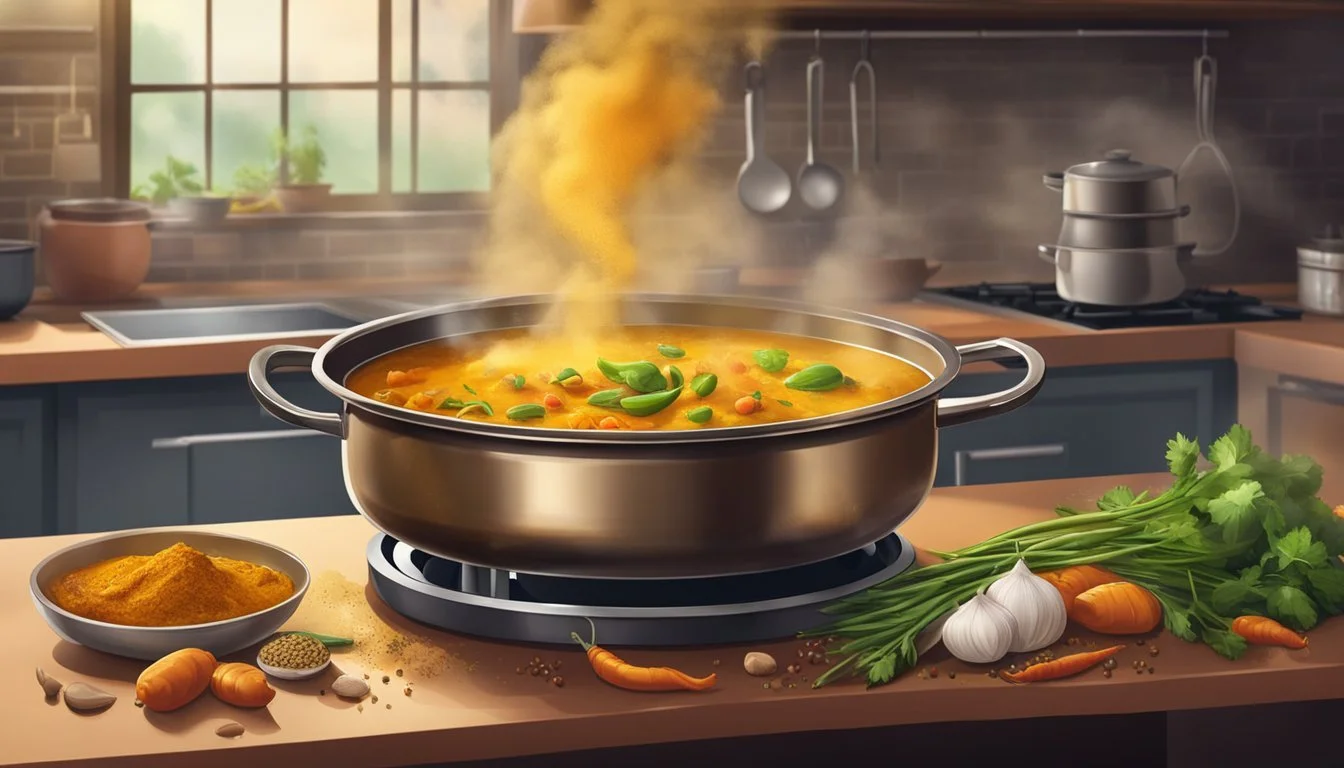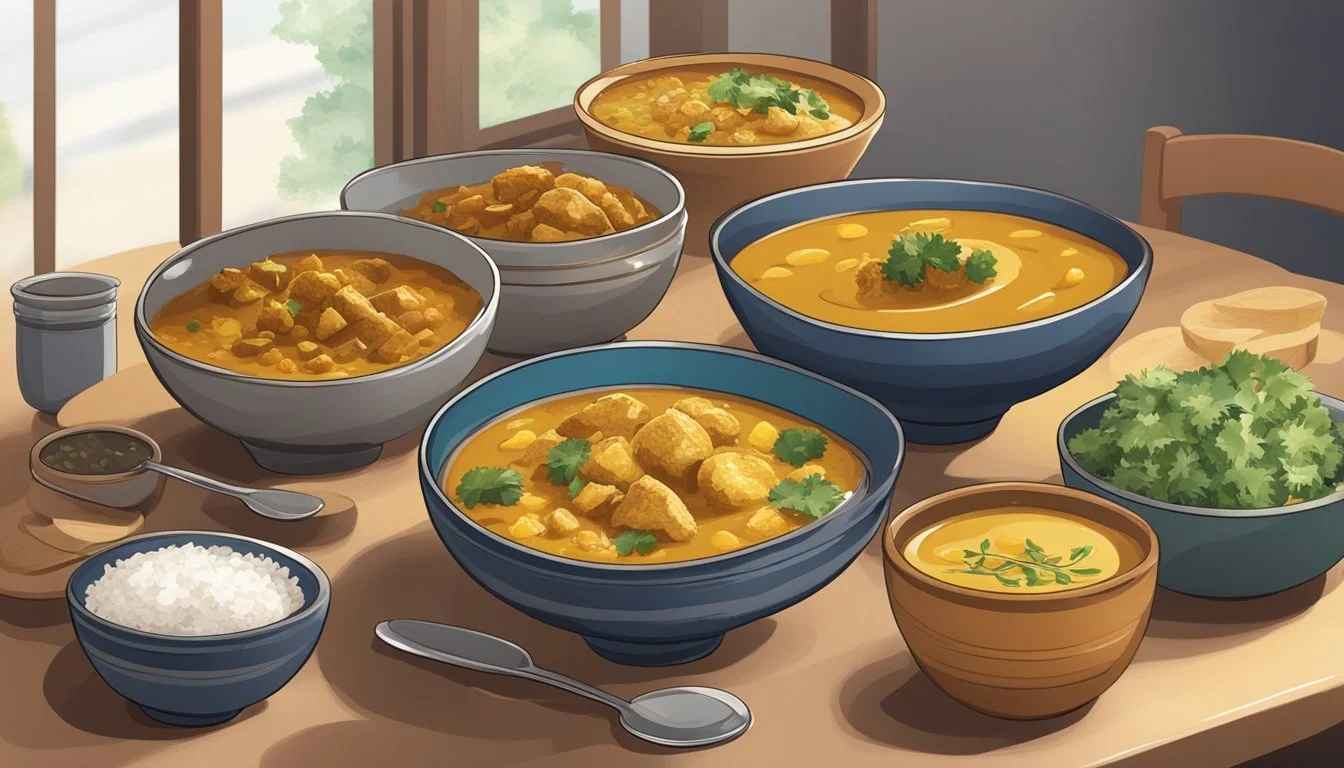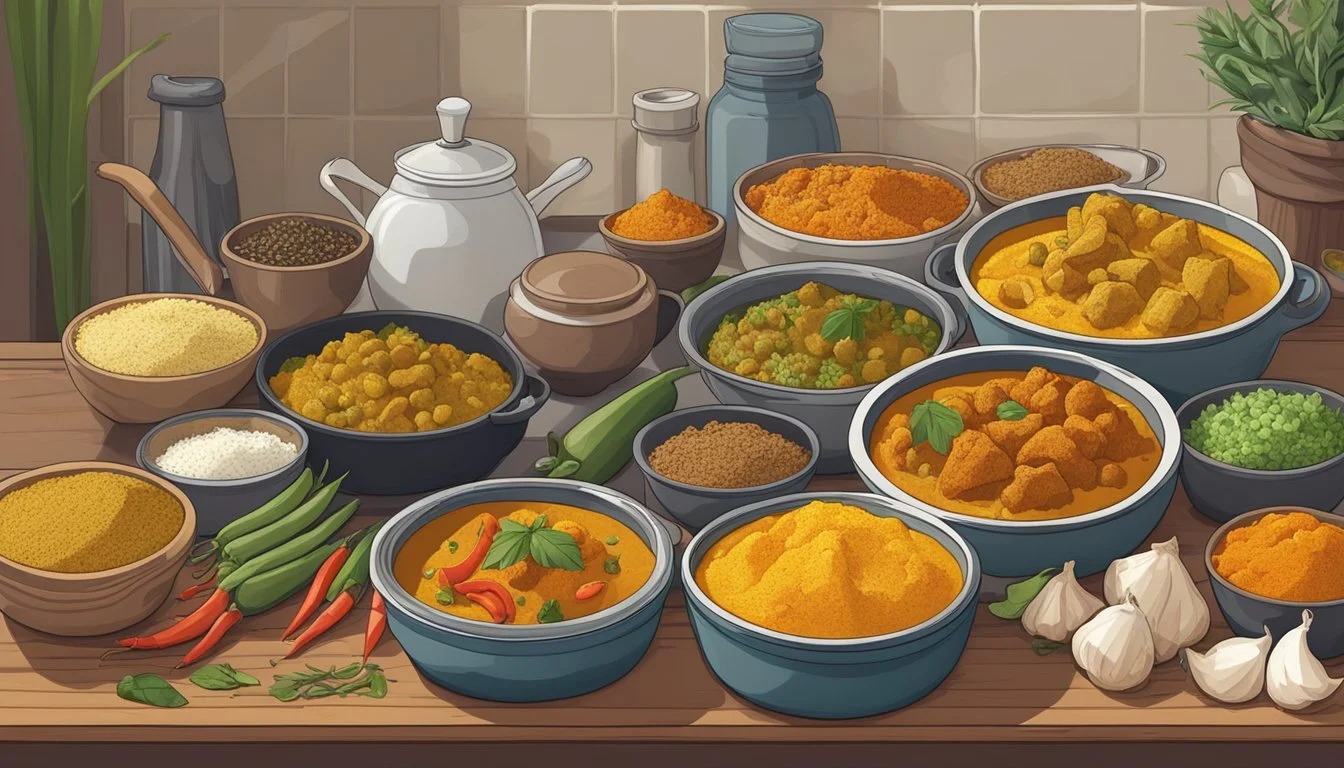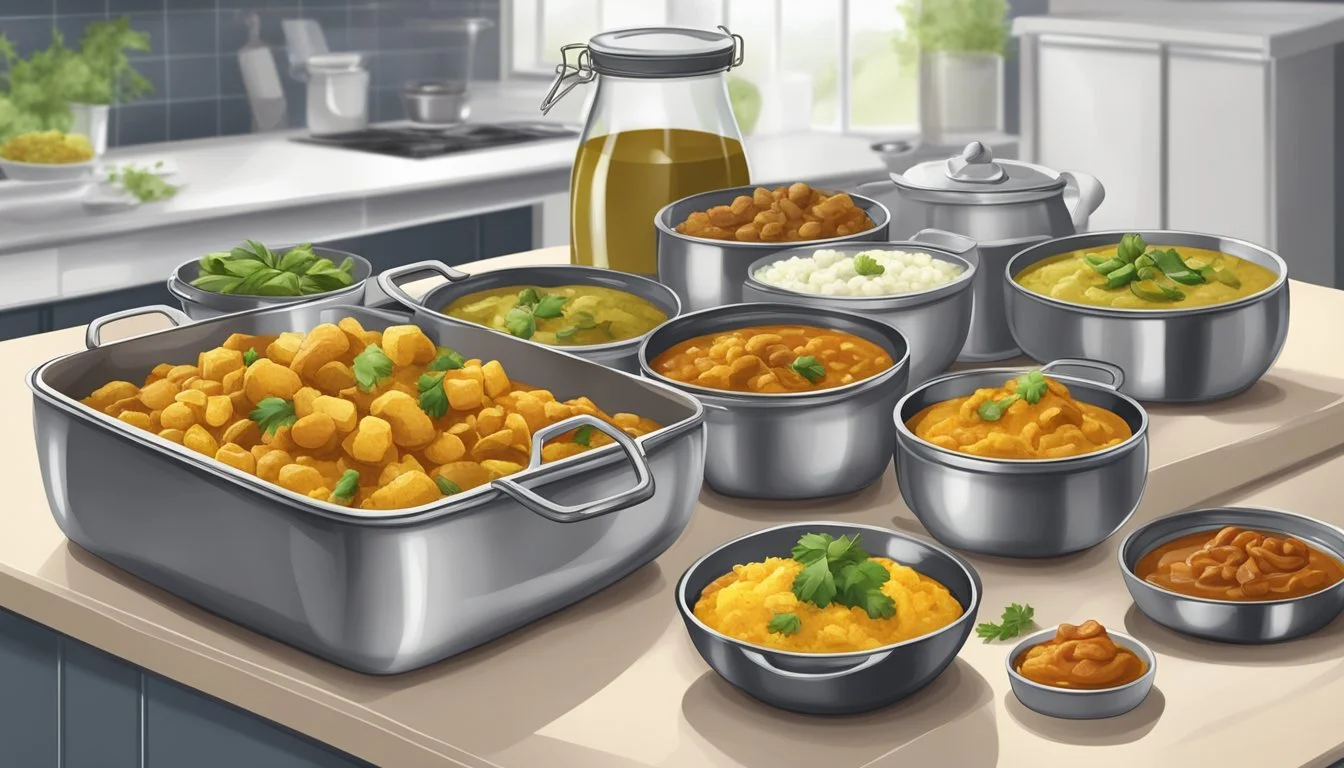How Long Do Freshly Prepared Curries Last?
Understanding Shelf Life and Storage Tips
Freshly prepared curries are a staple in many cuisines, renowned for their rich flavors and aromatic spices. Determining how long these dishes retain their quality and safety for consumption is crucial. Generally, the longevity of a curry depends on its ingredients and storage conditions. Meat-based curries typically last for 3-4 days in the refrigerator, while vegetarian or vegan curries may remain good for an additional day due to the absence of meat, which is more prone to spoilage.
The type of curry and the way it's stored significantly influence its shelf life. Curries should always be stored in airtight containers to prevent contamination and the spread of odors in the fridge. It's also important to let the curry cool to room temperature before refrigerating to prevent the growth of bacteria. Moreover, if a curry is frozen, it can last for up to one month without significant loss of flavor or texture, though consuming it within three months is preferable to enjoy its best quality.
Understanding Curry Basics
In the diverse world of curries, understanding the foundational elements is essential. This includes recognizing what defines a curry and the varied ingredients that contribute to its rich flavors and varieties.
Defining Curry
A curry is a dish featuring complex combinations of spices and herbs, usually including a form of gravy. Originating from Indian cuisine, the concept of curry has since expanded, encompassing a wide array of dishes across various cultures. While there is no singular definition that encapsulates all types of curries, they typically share a depth of flavor, often derived from a carefully crafted mixture of spices.
Common Ingredients and Varieties
The cornerstone of any curry is its spice blend. These blends can include, but are not limited to:
Apart from spices, curries often incorporate a primary ingredient such as meats or vegetables. Common varieties include:
Vegetable Curry: A medley of seasonal vegetables coated in a spice-infused sauce.
Chicken Curry: Tender chicken pieces simmered in a richly spiced sauce.
Lamb Curry: Lamb is cooked slowly with spices to fuse the flavors deeply into the meat.
Fish Curry: Fish is typically marinated and cooked in a spicy gravy, favored for its quick cooking time.
Tofu Curry: A popular choice for vegetarians and vegans, tofu serves as a protein-rich substitute in many curry dishes.
Each variant brings a unique experience to the palate, influenced by the ingredients' interplay with the spice blend. Whether it's a robust lamb curry from the northern regions of India or a delicate fish curry prominent in the coastal areas, curries are as diverse as the cultures they come from.
Factors Affecting Freshness
When considering the shelf life of freshly prepared curries, several factors come into play that can either extend or reduce how long the dish remains fresh. These factors range from the ingredients used to the methods of storage.
Ingredients Impact
The freshness of the ingredients directly influences the longevity of a curry. Fresh ingredients contain less bacterial presence, thus taking a longer time to spoil. Ingredients like dairy, fresh vegetables, and meats have their own shelf lives, which can affect the overall freshness of the curry.
Preparation Method
Proper cooking techniques play a crucial role. A curry that is cooked thoroughly, reaching the right internal temperatures, will usually last longer compared to one that's undercooked, as the heat can eliminate harmful bacteria that cause spoilage.
Type of Curry
The type of curry also matters. Meat-based curries typically last up to 3-4 days in the fridge, while vegetarian curries might stay fresh for 4-5 days. Curries with a higher acid content, such as those containing tomatoes or tamarind, may have a slightly longer shelf life due to the natural preservation qualities of acid.
Storage Conditions
Curries must be stored under proper storage conditions to maintain freshness. They should be kept in the fridge at a temperature below 40°F (4°C), or frozen for long-term storage. To keep the curry fresh, storing it in an airtight container is essential to prevent contamination and odour absorption.
Optimal Storage Solutions
Proper storage is crucial for maintaining the quality and safety of freshly prepared curries. Using the refrigerator and freezer can significantly extend a curry's shelf life, while airtight containers protect against contamination and preserve flavor.
Refrigerator Use
When using the refrigerator to store curry, it should be cooled to room temperature before being placed in the fridge. Curries with meat can be refrigerated for 3-4 days, whereas vegetarian curries may last 4-5 days. To ensure optimal freshness, store curries in shallow, covered containers to allow for even cooling.
Meat-based curry: 3-4 days
Vegetarian curry: 4-5 days
Freezing Techniques
Freezing is an excellent option for extending the longevity of a curry dish. Curries should be placed in freezer-safe containers or bags, with all air squeezed out to prevent freezer burn. They can be stored in the freezer for approximately 6-8 weeks. When freezing, label containers with the date to keep track of how long they've been stored.
To freeze curry:
Let the curry cool to room temperature.
Transfer to a freezer-safe container or bag.
Remove excess air and seal tightly.
Label with the date before placing in the freezer.
Airtight Containers
An airtight container is an essential tool for preserving the flavor and preventing contamination in both refrigerated and frozen curries. Containers should be made of food-safe materials that do not interact with the food's acids or spices, such as glass or rigid plastic. Wrapping solid containers with plastic wrap or aluminum foil can provide an extra seal and further prevent exposure to air and moisture.
For refrigeration: Use shallow, covered containers.
For freezing: Ensure the seal is tight to avoid freezer burn.
Preservation Timeframes
The shelf life of curry depends on its storage conditions and whether it has been refrigerated or frozen. Proper storage can significantly extend the shelf life, ensuring flavors are maintained and food safety is upheld.
Refrigerated Curry Shelf Life
When stored in the refrigerator, meat-based curries typically last 3-4 days. In contrast, vegetarian or vegan curries have a slightly longer refrigerated shelf life, generally 4-5 days. One should always store curry in airtight containers to maximize freshness. It's important to cool the curry to room temperature before refrigerating to prevent bacterial growth.
Frozen Curry Shelf Life
For optimal quality, one should consume frozen curries within 3 months, although they may remain safe for consumption for longer periods. When freezing, using freezer-safe airtight containers or heavy-duty freezer bags is crucial to prevent freezer burn and preserve taste and texture. Thawing should be done in the refrigerator and not at room temperature to ensure that it remains safe to consume.
Recognizing Spoilage
When it comes to curries, recognizing spoilage is crucial to avoid foodborne illnesses. The following indicators provide clear signs that a curry has gone bad and should not be consumed.
Visual and Textural Changes
Appearance: Spoiled curry often exhibits a dull color in contrast to its original vibrant hues. Look for any discoloration or signs of mold, which typically appear as fuzzy spots of white, green, or black.
Texture: Fresh curry has a consistent texture, while spoiled curry may become watery or develop a slimy layer on the surface. If the ingredients within the curry separate or the sauce's thickness alters significantly, these are potential signs of spoilage.
Odors and Tastes
Smell: A pungent or off-putting odor is a clear indicator of spoiled curry. Although curries have strong smells due to the spices, a sour or rancid smell indicates the presence of bacteria and spoilage.
Taste: A sour or unpleasant taste can signify that a curry is no longer safe to eat. It is imperative to smell and visually inspect the curry before tasting; one should never taste food when there is doubt about its safety, as this can lead to illness.
Safe Handling and Reheating
When dealing with leftovers, such as curry, proper storage and reheating are crucial for maintaining taste and ensuring food safety. These methods prevent food poisoning and preserve the flavor and texture of the curry.
Proper Thawing Methods
Curry should always be thawed safely to minimize the risk of bacterial growth. In the refrigerator, curry can be thawed over several hours, which is the safest method. For more rapid thawing, one can place the sealed container of curry in cold water, changing the water every 30 minutes to ensure consistent thawing. Avoid using hot water or leaving the curry out at room temperature to defrost, as these methods can enable bacteria to multiply.
Reheating for Quality and Safety
To reheat curry while maintaining its quality and safety, bring it to an internal temperature of 165°F as recommended by food safety guidelines. Here's how to reheat curry using various methods:
Microwave: Transfer the curry to a microwave-safe dish, cover, and heat on high, stirring periodically for even heat distribution.
Oven: Preheat the oven to 350°F (175°C), place the curry in an oven-safe dish with a bit of added liquid (water or broth), cover with a lid or foil, and heat until bubbling, typically for about 10-15 minutes.
Stovetop: Place the curry in a saucepan over medium heat, stirring occasionally, until it evenly reaches the desired temperature.
One should always check the curry's temperature with a food thermometer to ensure it has reached 165°F before consuming.
Preventive Measures
Taking preventive measures ensures the longevity and safety of leftover curry. Proper cleaning and hygiene, along with immediate storage after cooking, are paramount for extending the shelf life of the food.
Cleaning and Hygiene
Before handling any food, one should thoroughly wash their hands and sanitize all kitchen surfaces. This reduces the risk of introducing contaminants into the curry. Utensils, cutting boards, and any containers used for storage should be clean and dry. Any moisture can promote bacterial growth, which can lead to spoilage. Cleaning is the first line of defense in food safety and plays a significant role in the shelf life of leftovers.
Immediate Storage After Cooking
As soon as the curry cools down to room temperature, it should be transferred to an airtight container with a secure lid. Leftover curry needs to be kept away from moisture and air exposure as these are factors that can degrade its quality. It is crucial to store the curry in the refrigerator within two hours of cooking. The prompt transfer to cold storage inhibits bacterial growth and maintains the freshness of the food.
Food Storage: Place curry in a clean, airtight container.
Airtight Container: Ensure the container's lid is sealed tightly.
Temperature: Refrigerate promptly after cooling.
By adhering to these guidelines, one can maximize the shelf life of their curry while keeping it safe for consumption.
Additional Considerations
When considering the shelf life of curry, the ingredients play a crucial role. Curries can contain a diverse range of components, and each affects preservation differently.
Curry With Dairy or Meat
Dairy-Based Curries: When a curry includes dairy products such as cream or yogurt, it should be consumed within 1-2 days when stored in the refrigerator. Dairy can sour and spoil relatively quickly, leading to off-flavors and potential food safety risks.
Meat-Inclusive Curries: Curries containing meats, like chicken or other animal proteins, typically remain fresh for about 3-4 days in the refrigerator. Due to the risk of bacteria growth at room temperature, it's critical to refrigerate meat-based curries promptly and reheat them thoroughly before serving.
Curry With Vegetables or Legumes
Vegetable Curries: Curries made primarily with vegetables or grains have a slightly longer fridge life, usually lasting up to 4-5 days. Ingredients such as turmeric, coriander, and ginger may aid in preservation to a degree, but one should still be vigilant for signs of spoilage.
Legume-Based Curries: These curries, often common in Southern India, typically maintain freshness for the same duration as vegetable curries. Despite the natural preservative qualities of some spices, refrigeration is essential, and these dishes should never be left at room temperature for extended periods.
Conclusion
Curries, favored for their rich flavors, have a variable shelf life depending on their ingredients and storage conditions. Meat-based curries typically last 3-4 days in the refrigerator, while vegetarian or vegan curries can last a bit longer, about 4-5 days. It is important to store them in air-tight containers to maintain their freshness and prevent contamination.
For extended storage, freezing is an effective option. Curries can be stored frozen for up to three months to preserve their taste and quality. Thawing must be done properly, preferably in the refrigerator, to ensure safety and retain their culinary appeal.
One should always inspect the curry before consumption. Signs of spoilage include:
Odd or sour smell
Change in color
Presence of mold
If any of these signs are evident, it is crucial to discard the curry to avoid foodborne illness. To summarize, the shelf life of curries hinges on proper storage techniques and prompt refrigeration after cooking. By adhering to these guidelines, individuals can enjoy their curry while minimizing food waste and ensuring safety.










